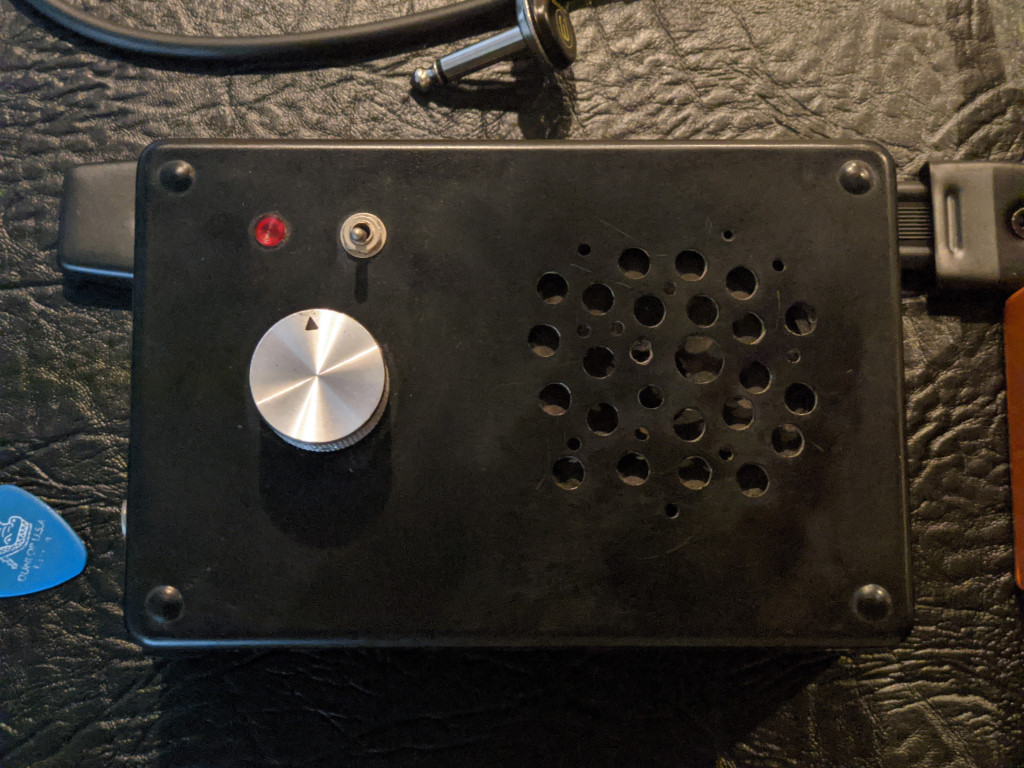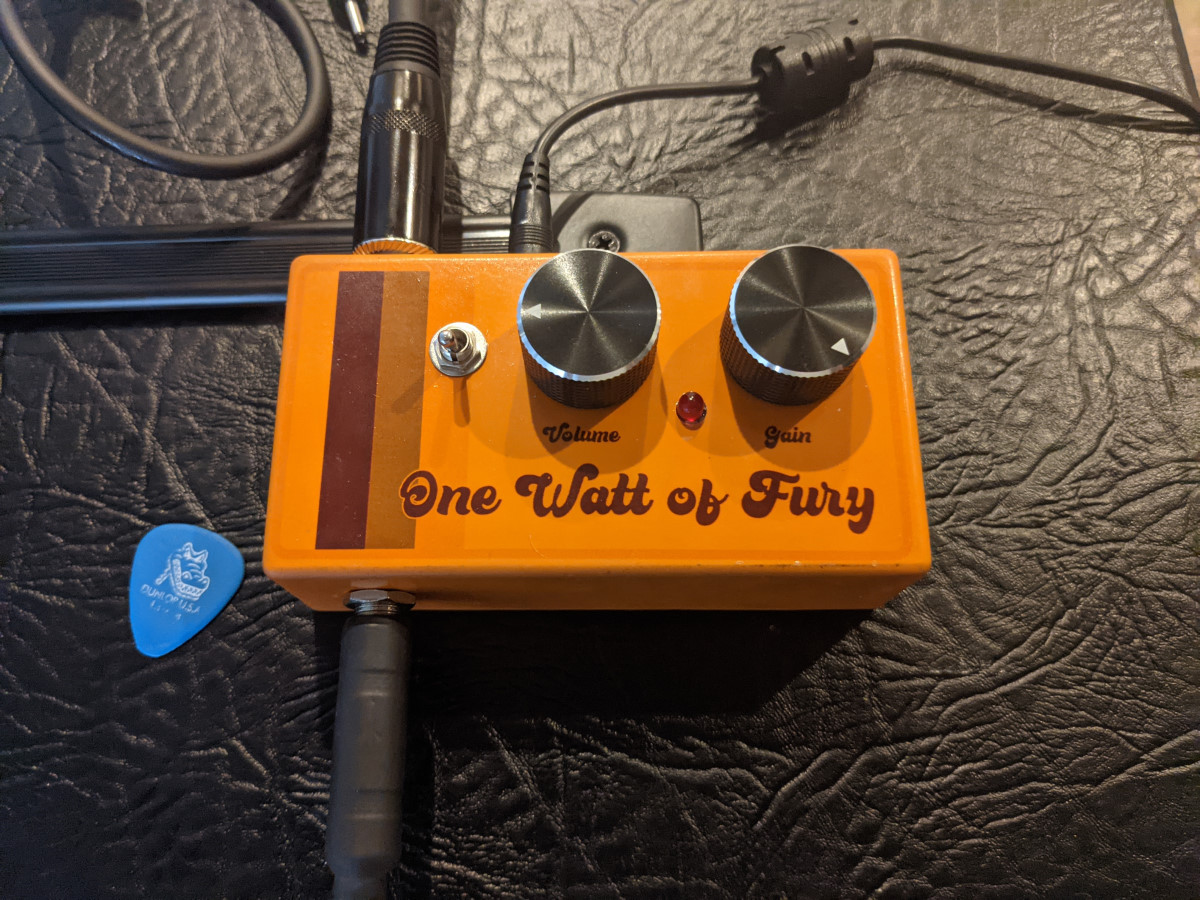

Version 2.1
October 2021
In the days when the internet was slow, I was building 1W amps.
They were some of my first electronics projects. Information was scarce, but Radio Shacks were plentiful. I learned about the Smokey circuit, which is a battery-powered amp that can be built with as few as three parts, and threw one together in a crappy plastic project box with a self-contained 3″ speaker. I then realized that I could put them in anything, so I put one in a retro-style clock radio with the radio dial rigged as a gain gauge. Then I tweaked the circuit for bass and put one in an old Samsonite suitcase, which I ported based on the Thiele-Small parameters of the speaker. None of them sounded “good,” but they worked, and I was finally able to answer burning questions like, “What would it sound like if you put a guitar amp in a washing machine?”
Years later, after discovering the joy of DIY guitar pedals, I wondered about the state of 1W novelty amps. I came across the Ruby circuit, which is an improved Smokey, and put one in a pedal case marked “One Watt of Fury.” Despite its relative lack of fury, it didn’t really sound that bad, especially with a pedal board in front of it, and I began to contemplate what it would sound like if it had reverb and was housed in a box decorated like a disco Howard Johnson’s.
Construction
One Watt of Fury is based on the Ruby Amp by runoffgroove. Like the Smokey circuit, it uses an LM386, which is nearly a complete amp on a chip. The Ruby adds some niceties to optimize it for guitar, including a JFET input buffer to better match a guitar’s output. It has a level control that adjusts the amount of signal going into the amplifier section and a gain control that adjusts the LM386’s internal gain.
It worked fine as an amp head packaged up in a 1590B pedal enclosure, but I missed not having reverb on the amp. I couldn’t figure out how to add reverb within those size constraints, so I went drastically the other way and made a plywood box for it that’s probably a hundred times bigger than necessary by volume—mostly because I barely knew how to cover an amp with vinyl and the process didn’t seem like it would scale down well. At the time, I didn’t think it was possible to DIY a reverb, so I bought the cheapest reverb pedal on the market and removed its parts to mount it inside the amp. It was more complicated than anticipated to get it incorporated into the amp without the knobs and switches that it was designed to use, but it was fun and actually doesn’t sound that bad. It uses three PT2399s, which are really delay chips, so at many settings it sounds more like slapback than reverb, but it works.
The case is mostly plywood with a dado cut into to accept aluminum plates on the front and back, where the knobs and jacks are attached. The wood is covered with glitter vinyl, which is probably more sparkly than the photos imply, and the front panel is decorated with a transparent waterslide decal.
Sound
It sounds about like you’d expect. It’s not going to make anyone regret their vintage tube amp purchase in terms of raw tone, but in the grand scheme of things, it definitely sounds like a guitar amp. I think it’s better than the amp that they threw in for free with my first guitar. That may be entirely because I usually play One Watt of Fury through a real 12″ guitar speaker and the free amp came with an 8″ speaker that looked like it fell out of the door of a 1982 Chevrolet Citation, but either way, it’s not the worst amp I’ve owned. The following sample is pretty raw, with just a Telecaster straight into the amp, out to a 1×12 open-back cab, recorded with an SM57 on the cone and an Oktava MK012 a couple feet back to get a little room sound.








